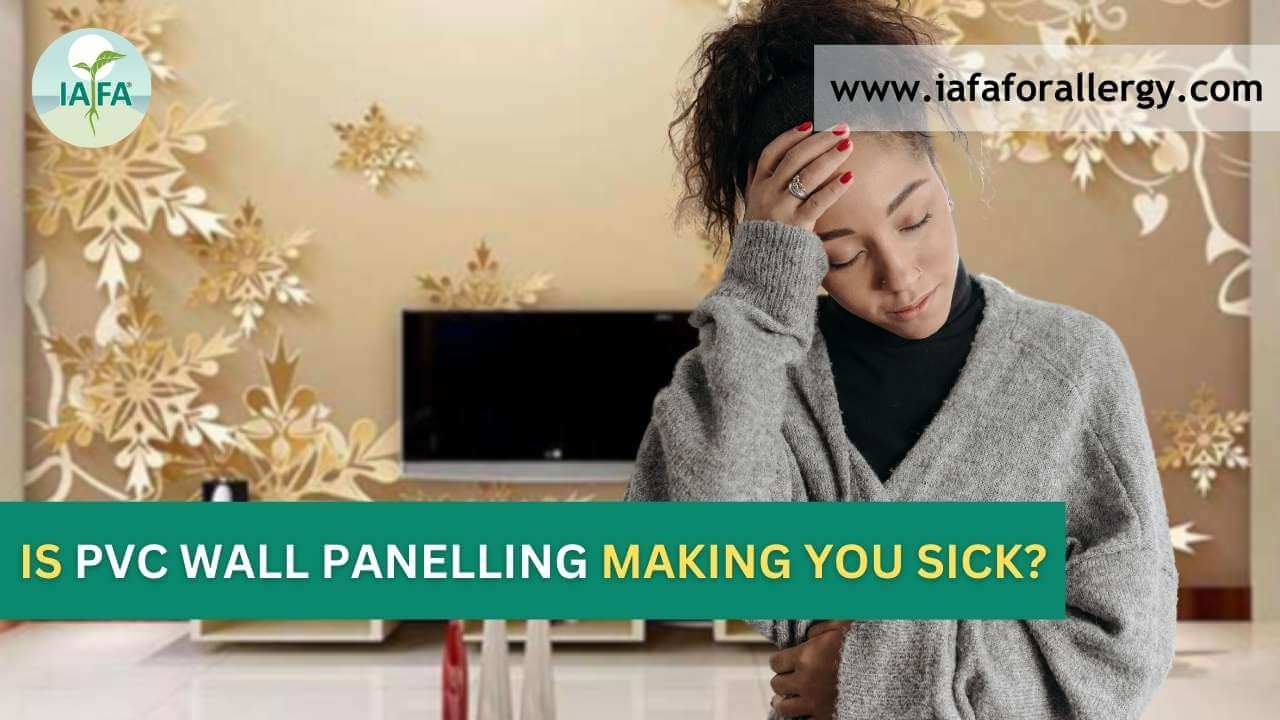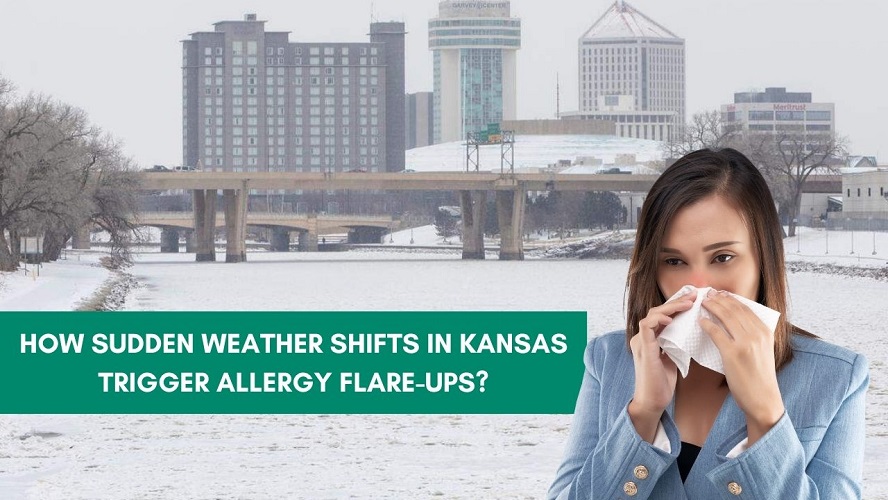Overview
We have many patients visiting IAFA Ayurveda® with complaints of ABPA (Allergic Bronchopulmonary Aspergillosis) and Aspergillus Sinusitis, further questioning to enroute the root cause led us to know that they had recently done the PVC Panelling on their damp walls. Are you also wondering about the reason behind it? Then keep reading to know the exact cause of how PVC Panelling is related to ABPA and Sinusitis, Is PVC wall panelling safe and how one can prevent it.
Here’s a research article explaining the same, where controls and sample individuals were kept under observation by getting exposed to indoor air pollutants like PVC Panelling. As per this study, people who got exposed more to Aspergillus Fumigatus experienced more chronic respiratory symptoms than the control group. At IAFA Ayurveda® we have also observed the same as individuals who have done indoor PVC Panelling experience respiratory symptoms.
What is PVC Wall Panelling?
PVC panelling is an interior design covering of walls using Polyvinyl chloride, a lightweight, water-resistant, and durable material. It is done instead of traditional wall paints or wall finishes. Although Polyvinyl chloride is water resistant, it doesn’t allow the walls behind to breathe the air properly which is the main cause of ABPA (Allergic Bronchopulmonary Aspergillosis) and Aspergillus Sinusitis.
How PVC Panels Cause ABPA (Allergic Bronchopulmonary Aspergillosis) and Sinusitis?
PVC Panelling has become popular and many are doing it for aesthetic purposes, but getting it done on damp walls has more risk than benefits. Usually, PVC is water resistant but it prevents the walls behind it from breathing the air and retains moisture. The moisture allows various fungus species to grow, one of them is Aspergillus. The aspergillus releases the spores into air, the sensible individuals breathe the air and get infected with the fungi leading to ABPA (Allergic Bronchopulmonary Aspergillosis) and Aspergillus Sinusitis, which are some of the PVC wall panel health risks.
What is Aspergillus Fumigatus Fungus?
Aspergillus Fumigatus Fungus is a species of fungi belonging to the genus of Aspergillus. It is usually harmless to healthy individuals with good immunity. But in people with compromised immune systems, this fungi species can cause health issues like Invasive Aspergillosis, ABPA (Allergic Bronchopulmonary Aspergillosis), and Aspergillus Sinusitis. It generally grows in damp, moist and mould environments and can be the reason behind the Allergies caused by PVC panels.

What are the Symptoms of Allergic Bronchopulmonary Aspergillosis?
The patients with ABPA (Allergic Bronchopulmonary Aspergillosis), who have visited IAFA Ayurveda® experienced the following symptoms and the people with Asthma are at increased risk of getting affected.
- Wheezing
- Shortness of breath
- Coughing
- Chest pain or chest tightness
- Cough with blood or brownish phlegm
- Joint Pain
- Fatigue
- Weakness
- Fever
Read More:- Allergic Bronchopulmonary Aspergillosis (ABPA) – Causes, Symptoms and Ayurvedic Treatment
What are the Symptoms of Aspergillus Sinusitis?
People with Aspergillus Sinusitis from PVC panels can experience the following symptoms:
- Nasal congestion
- Facial pain
- Sinus headaches
- Sinus drainage
- Runny nose
Read More:- Aspergillus Sinusitis – Causes, Symptoms and Ayurvedic Treatment
What are Some Other Reasons for ABPA (Allergic Bronchopulmonary Aspergillosis)?
ABPA (Allergic Bronchopulmonary Aspergillosis) is caused due to exposure to Aspergillus fungus in the environments, along with PVC Panelling on damp walls, the following are some of the reasons for the release of Aspergillus in the environments which can cause both ABPA (Allergic Bronchopulmonary Aspergillosis) and Aspergillus Sinusitis.
- Pigeon shafting, shedding and droppings – pigeon feathers, dander, and droppings can harbour the growth and release of Aspergillus and other allergens into the environment.
- Mouldy environments – poorly ventilated rooms, bathrooms, basements, and damp walls can encourage the growth and release of Aspergillus.
- Compost – compost has abundant Aspergillus spores, people who have great exposure to gardening and composting can be at risk of ABPA.
Remember, all these reasons can not harm normal individuals but can be riskier to immunocompromised individuals and in people with underlying respiratory conditions.
Prevention and Mitigation of Allergic Bronchopulmonary Aspergillosis and Aspergillus sinusitis
The best and the most recommended option for Fungal infections from PVC panels is painting the houses every year with proper measures and cautions. If you still want the PVC Panelling to be done, then you have to follow the precautions given below to prevent from harmful infections like ABPA and Aspergillus Sinusitis.
- Resolves dampness issue: Firstly, make sure that your house, particularly the walls, have proper ventilation and do not have any moisture. If there is any dampness, dry them completely before the PVC Panelling gets done. Better to avoid PVC panelling is the best option.
- Ventilation: As we have already mentioned above, proper ventilation is needed to reduce the risk of mould buildup.
- Regular checks: The walls behind PVC Panels are to be checked regularly to catch any mould development and take care at the beginning.
Wrapping Up!
PVC Panelling has become quite common these days, but everyday exposure to it can cause risk to individuals with sensitive immunity. So, the best answer to the question, Is PVC panelling toxic? Always avoid PVC Panelling, prefer normal wall paintings and finishes, and make sure your house has proper ventilation and sunlight exposure. Neglecting the symptoms can lead pathways to other related infections. So, approach the healthcare professional as soon as you get infected, and remember that Ayurveda offers the best and permanent treatment for ABPA and Aspergillus Sinusitis.

Our patients at IAFA Ayurveda® who have been suffering with ABPA and Aspergillus Sinusitis and whose cause is related to PVC Panelling have got successful treatment and are now leading a happy and healthier life without any worries, read complete case study. If you are also looking for some permanent and natural solution, then book an online consultation now with our ayurveda experts and get it treated immediately.








